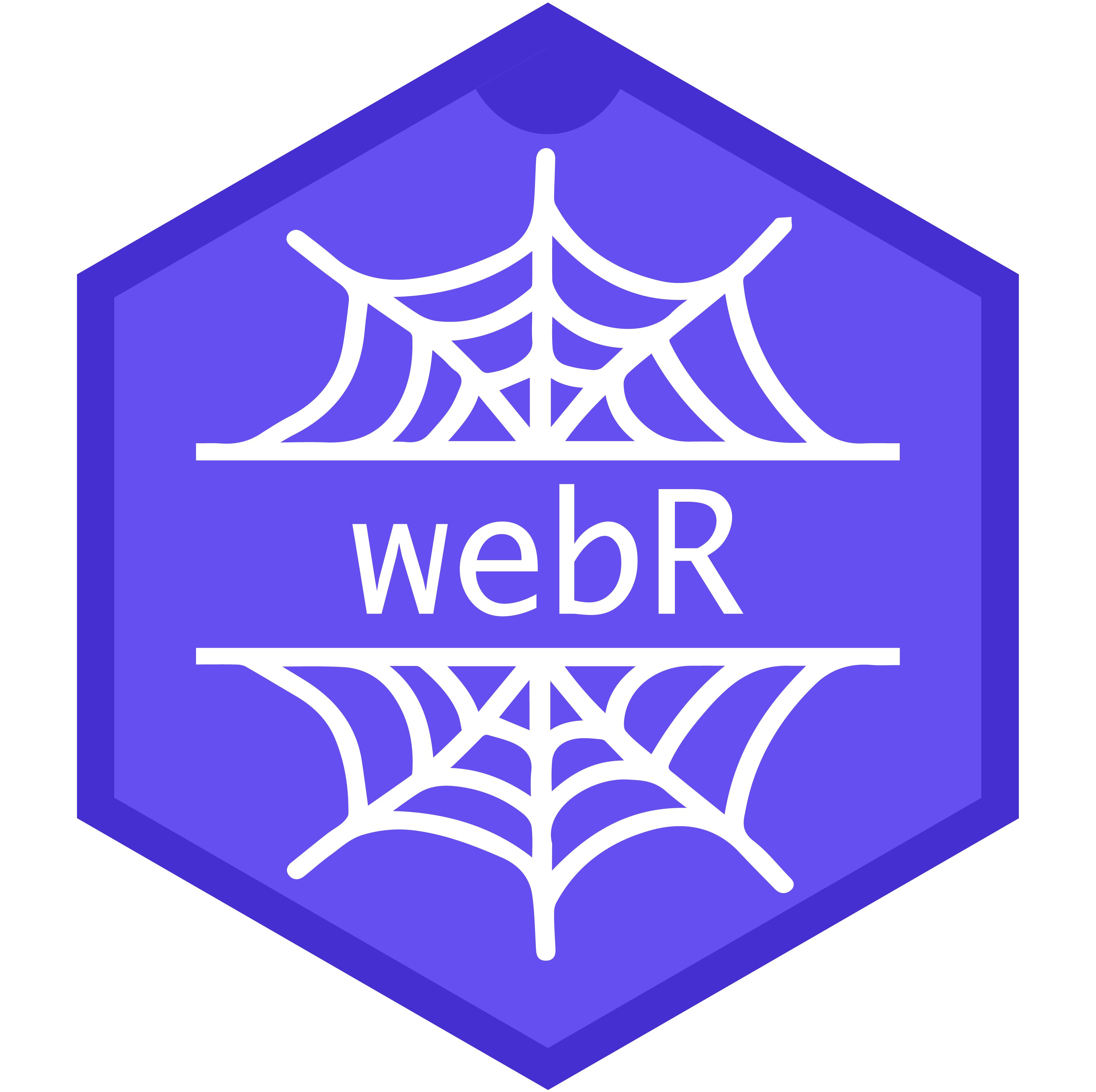Evaluating R Code
Evaluating R code with evalR
The WebR.evalR() method can be used to evaluate R code and retrieve the result of the computation. The method takes two arguments,
code- The R code to evaluate.options- Optional: AEvalROptionsobject controlling how the code is evaluated.
A promise is returned resolving to a reference to the result of the computation, given as an RObject proxy.
The options argument provides advanced control over how the R code is evaluated and captured. For example, this can be used to enable R’s autoprint feature.
The env property of the options argument can be set when you wish to evaluate the R code within an R environment, rather than the default global environment. This could be used, for example, to sandbox an evaluation in a local environment to avoid <- creating variables in the global environment. Providing an environment is also a convenient way to pass data from Javascript to the R process.
The normal stream output is written to the JavaScript console. The error stream is also written to the console except when it is emitted with structured R conditions and captureConditions is true (the default). In this case, R errors raised during evaluation are rethrown as JavaScript exceptions, and R warnings and messages are rethrown as JavaScript warnings.
RObject references returned by evalR() are subject to memory management and should be destroyed when no longer in use. The related Shelter.evalR() method can be used to automatically manage returned R objects using a webR shelter.
Returning JavaScript values when evaluating R code
A selection of convenience methods return the result of evaluating R code as a promise to a JavaScript object, rather than an RObject reference. The benefit is that since the returned object is of a raw JavaScript type, it does not need to be memory managed like an RObject result would be.
| Method | Returned object type |
|---|---|
WebR.evalRBoolean() |
boolean |
WebR.evalRNumber() |
number |
WebR.evalRString() |
string |
WebR.evalRVoid() |
No return value |
The methods in the table above are shortcuts to the more general WebR.evalRRaw() method. This takes an additional outputType argument, which determines the type of raw JavaScript object returned. Using the evalRRaw() method additionally allows for the return of JavaScript Array objects.
objectType argument value |
Returned object type |
|---|---|
'boolean' |
boolean |
'number' |
number |
'string' |
string |
'boolean[]' |
Array of boolean values |
'number[]' |
Array of number values |
'string[]' |
Array of string values |
'void' |
No return value |
The evalRRaw() method and its related convenience methods require that the result of the R code evaluation is a vector of type logical, integer, double or character and must not contain missing values.
Evaluating R code and capturing output with captureR
The Shelter.captureR() method is lower level and more flexible than evalR(). It allows the user to capture any stream output, plots, and conditions raised during evaluation of R code, in addition to returning the result of the computation.
Unlike evalR() which only returns one R object, captureR() returns a variable number of objects when R conditions are captured. Since this makes memory management of individual objects unwieldy, captureR() requires the shelter approach to memory management, where all the sheltered objects are destroyed at once.
The method takes two arguments,
code- The R code to evaluateoptions- Optional: AEvalROptionsobject controlling how the code is evaluated.
A promise is returned resolving to a JavaScript object with three properties,
result- The result of the computation, as anRObjectproxy.output- Output captured during execution, an array of objects with propertiestypeanddata.images- Plots captured by the canvas device during execution, an array ofImageBitmapobjects.
Stream output is returned as elements of output with a type property of stdout or stderr. The line of output is returned in the form of a JavaScript string in the data property.
Any raised conditions are also included as elements of output with a type property of message, warning, or error. A reference to the condition is returned in the form of an RObject proxy in the data property.
Plots captured by the webr::canvas() graphics device are included as elements of images, in the form of ImageBitmap objects. The captured images may be displayed on the page using the drawImage() method of a HTML Canvas element’s 2D rendering context.
